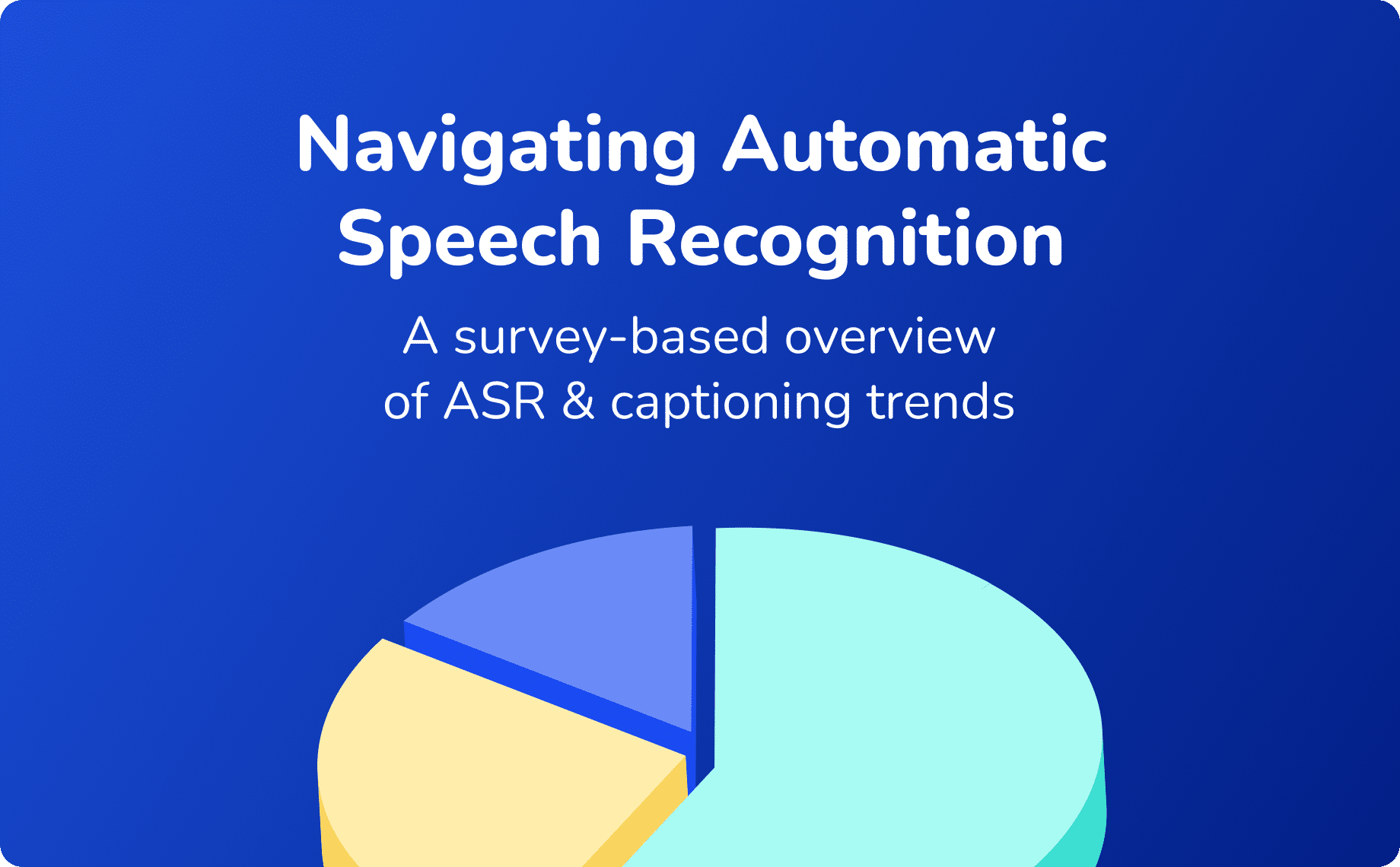Media professionals, as well as virtually every company that interacts with audiences online, should be ready for sweeping changes that will likely affect today’s accessibility standards. As companies consider how inclusive their media and communications efforts are, they need to familiarize themselves with the term CVTA, or the Communications, Video, and Technology Act.
Your relevant team members focused on content or media are likely well-versed in the current accessibility requirements of the 21st Century Communications and Video Accessibility Act (CVAA). It has helped make online communication and video content more accessible for many. However, the CVTA is now likely to expand to how companies use Artificial Intelligence and other emerging technologies in their work as well. With more companies using AI to help with daily tasks and communication, legislators are considering it in more depth and pushing for updates to keep environments accessible.
As a company specializing in using AI to offer greater accessibility, Verbit’s team is carefully following these developments. Here’s a quick overview of the CVAA and the potential updates in the CVTA to help you prepare.

The CVAA Explained
The Obama Administration signed the CVAA into effect to address accessibility challenges related to new emerging technologies. These emerging technologies included innovations in digital and broadband communications as well as mobile devices.
In recent years, developments exposed shortcomings in the CVAA. The requirements for video conferencing are inadequate, for instance. Additionally, now that streaming has overtaken cable by attracting a higher number of viewers, having less clear or stringent rules for streaming platforms no longer seems logical.
Technology is also continuing to evolve, meaning there is a need for more guidance on emerging tools. As you connect more with audiences online or offer greater video content, it’s important to understand basic CVAA requirements.
Title I of the CVAA: Modern Communication Methods
Title I of the CVAA addresses various forms of communication you’re likely using. The law works to make sure these methods are accessible to those who are Deaf, hard of hearing, blind or have low vision, among others. These include:
- VoIP Services: Interconnected voice over internet protocol services use the internet to connect calls rather than analog methods.
- Non-interconnected VoIP services: These use voice over internet protocol as well, but generally apply to gaming consoles like Xbox Live, which allow people to communicate.
- Electronic data interchange: Communications like text messages and emails.
- Interoperable Video Conferencing services: Audio-video communication services.
- Telecommunication Relay Services: A service where a third-party transmits and translates calls for those who use sign language or have speech-related disabilities.
As you develop new processes or test out new methods to connect with audiences, know that the law also requires that you consider how people with disabilities can interact even during the development process.

Title II of the CVAA: Video Accessibility
Title II has two main focuses: captions and audio description. The CVAA requires captions on all network or broadcast TV and on any streaming content that appeared previously on TV. For example, if you’re a media company that created programming that appeared on cable, it needs to be captioned on Netflix too. Live captioning broadcasts happening in real-time are also mandatory under the CVAA. There are also specific requirements based not just on having captions themselves but on whether they’re accurate, complete, properly timed and well-placed so as to not block other important on-screen visuals.
However, if you’re at a media company that produces original programming for Netflix, currently, you aren’t obliged to caption under the CVAA because it never appeared on TV. However, just because it’s not mandatory doesn’t mean you’re off the hook. Netflix faced a class action lawsuit for not including audiences with disabilities under a separate accessibility law, the Americans with Disabilities Act (ADA). Now, Netflix executives have agreed to caption 100% of their content.
The CVAA sets requirements for major networks to audio describe a minimum number of hours per quarter. Audio description assists audience members who are blind or have low vision by providing them with a narration of the visuals from video content. Originally, the CVAA required networks to audio describe 50 hours a quarter, but now that’s to 87.5.
Even if you don’t work for a media company per se, almost all companies are now investing in engaging with their audiences via video and streaming content on social platforms. It’s, therefore, important to look at all content your company is creating, regardless of your industry, to understand what’s likely to come and what the best practices are to engage more people with equity.
How the CVTA may change today’s accessibility requirements
In the case of AI, adoption has been shockingly fast-paced. According to a study by IBM, about 35% of businesses worldwide are using AI, while another 42% are looking at ways they could be using it. While the usefulness of AI is clear, what isn’t is how the government and companies will address AI-driven technology and experiences to make them accessible.
As talk of more AI and emerging technologies comes up, virtual reality (VR) is also of high interest. Many companies are investing in creating life-like and interactive experiences as ways for audiences to engage. It’s important to note that a recent lawsuit resulted in captioning being considered and implemented in VR experiences too. Industries including education, construction, manufacturing, travel, eCommerce and more are using VR for training, modeling and marketing. If you’re not exploring VR yet, you likely will in the near future. As more businesses embrace new technologies like VR and others, there will be more questions about who’s responsible for making such experiences accessible.
If the CVTA passes, it will put accessibility requirements in place and make it clear that VR and AR experiences must be accessible. The law could also define specific accessibility standards for AI. Additionally, the CVTA would expand, update and improve captioning and audio description requirements, including on streaming platforms. Companies should be ready for some of these changes to start coming to fruition and start thinking about the current accessibility of their experiences and communication methods now.

Why it’s crucial to keeping up with the CVAA and CVTA
The CVAA offers important guidance on accessibility now, but updates like the CVTA will likely keep companies accountable for changes in technology. Knowing that updates are likely and that AI-driven experiences are on the rise, you and your company will be well-suited to start proactively offering improved access. Adding audio description is one example of a growing trend that more accessibility-conscious businesses and media outlets are now focusing on, especially those responsible for livestreaming.
All of the legal requirements and accessibility standards can be tricky to follow. Having a partner to help your media company or business evolve with accessibility standards can be key. Reach out to Verbit to receive advice and guidance on accessibility solutions that can support your business and audience needs.



